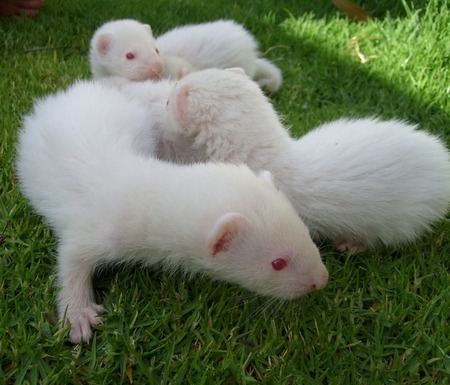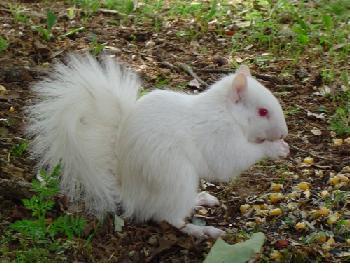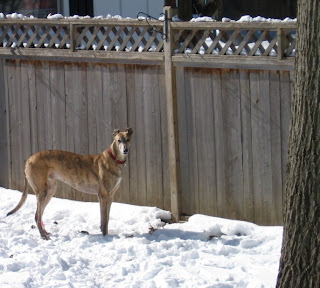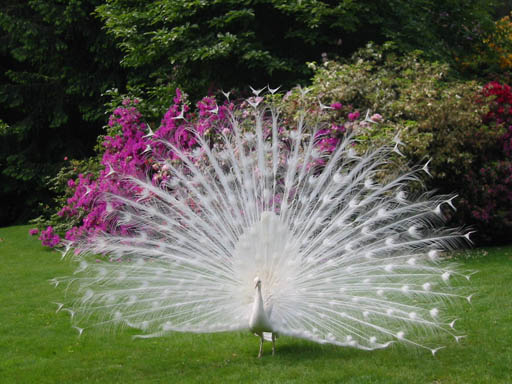|
|
|---|
Tuesday, February 8, 2011
Hi! My name is Nicholas, but most people just call me Nicky because I'm a friendly, informal sort of guy. I've never written one of these blog things before, so I hope I can do it right. Piper says there is really nothing to it, but that's easy for her to say because she's had a lot of experience doing it. Thankfully, Mom has been a big help with the research, especially in looking up my pedigree and stuff like that. So anyway, here goes!
Piper already told you a little bit about my racing background, but now I will tell you more of the details. First of all, my dam, Runtodabone, was a brindle, like me. It turns out that she was pretty amazing, and not just because she produced such tasty milk! She ran in 93 races, which is a heck of a lot of races, and she won 28 of them! Then she went on to have 33 puppies. I was in the very first litter she produced, and I had 4 littermates. Three of us were brindle, like our mama, and two were fawn, like our daddy.
Mom and I couldn't find any pictures of my dam, but we did find a couple of my sire, Dodgem By Design. He was a very handsome red greyhound who ran 85 races and had 32 wins. He was also incredibly busy as a sire because -- guess what! -- he produced 9001 offspring!
All of my littermates ran in some real races, and 3 of them even had some wins. But I am ashamed to admit that I got retired early because I just didn't run fast enough. I think I must have been a big disappointment to my dam and my sire and my trainer and my owner. But Mom told me it was actually very good that I got out of the racing industry early on because too much bad stuff happens there. She said she thought that both my sire and dam ran way too many races, and they probably had to run them in all kinds of bad weather. They were just lucky they didn't fall and get hurt. Also she thinks that 33 puppies are too many for any bitch to have to produce, especially since she had a litter every year, and one year she had two litters. Mom also said that using the same sire sooooo many times is not a good idea either, in case he has some genetic problem he might pass along.
Anyway, I feel better now about my lack of success as a race dog. And I do have to admit that hanging out in the back yard, watching squirrels, and sleeping on a nice, soft dog bed are much preferable to the type of life I had when I was growing up.
Mom and I couldn't figure out which farm I was born on. At one time there were more than 50 breeding farms in Kansas, but there might not be as many now, since all the Kansas tracks are closed. I might have been born at a farm near Eudora or one near DeSoto or one near Abilene. All of those are pretty big greyhound breeding farms, and they are close to the Woodlands track (which is closed now, but it wasn't back when I was a pup). Anyway, it doesn't really matter where I was born, exactly, because life on all these greyhound farms is pretty similar. So I'll just tell you what I remember.
My littermates and I were born in a whelping stall, and we stayed there with our mama until we were about 9 weeks old. Then we got taken away from our yummy milk source, and we had to eat "real" food, which consisted of dry food and cooked meat. That's also when we got tattoos in our ears, which was kind of painful, but at least people always know who we are and how old we are by looking at our tattoos. The right ear shows the month and year of our birth, and the left ear has our registry number with the National Greyhound Association.
The nice part was that all of us in the litter got to stay together in a pen with an outdoor run. We ran and played and chased each other and tumbled around and had a really fun time every day. Then when we were four months old, we got divided up into smaller groups, and we lived in paddocks where we could do a whole bunch of running, which greyhounds really like to do. This way we got stronger and faster and better coordinated. We kept eating dry food, but now we got raw meat with it instead of cooked meat. And we had to learn to wear a collar and to walk nicely on a leash and let people groom us and handle us all over.
The kind of meat that greyhounds eat is called 4-D Meat. I know this sounds like the name of some fancy brand of dog food, but it's not really. The 4 D's stand for Diseased, Disabled, Dying, and Dead. Greyhounds are fed this kind of raw meat because it is the cheapest meat available. It is considered unfit for people to eat, so that's why it is fed to dogs. In fact, the USDA requires that charcoal be added to the meat so that people won't be tempted to eat it.
So anyway, we lived that way and still had a bunch of fun until we were almost a year old, and then the serious training started. We had to go to a place where greyhounds learn to be race dogs, and we lived in wire crates that were small and cramped. There must have been 100 or more crates at that place, and they were stacked up all around the room. Most of the girls were in the top row of crates, and the boys were on the bottom row.
We had to spend a lot of time in our little wire prisons, but four times a day we were let out to play in the yard with the other dogs. And of course, we did our pottying then because most of us didn't want to do it in our crates and then sit around in it. That would be nasty! We had to wear muzzles while we were out with the other dogs, just to make sure we didn't hurt each other. And a couple of times a week, we were taken to the track and taught all about lures and starting gates and how to run around the track.
So by the time we were 18 months old, we pretty much knew how to run a race, and we went to live at The Woodlands track. A race only takes about 30 seconds to run, but you really have to put a lot of energy into that 30 seconds. This can be quite tiring, which is why most greyhounds only race once or twice a week. Males and females race together, but the females get some kind of shot called testosterone to keep them from being in season and distracting the males.
It's the trainers who decide when dogs should retire from racing. My trainer decided that my career was over before I had even run a single real race. Luckily, there was a rescue group right there at the Woodlands track who took me in and found a home for me. But it didn't used to happen this way. Back in the bad old days, like before 1980, almost all the dogs who couldn't race were killed. This amounted to something like 60,000 dogs a year, and mostly they were euthanized by shooting them in the head.
Then in the 1980s, people started learning about the plight of these retired race dogs, and a bunch of groups were formed to try to rescue them. In 1994, more greyhounds were adopted (14,000) than were killed (13,000), which was the first time that had happened. Even more greys are adopted each year now, but there are still thousands who don't get saved.
Racing is a dangerous sport, and many times dogs are injured during a race. If they just have a wound or something that can be easily patched up, the dog can race again. But if they have something like a broken leg, they are usually just put down unless a rescue group wants to take them. This is because it's expensive for the breeders to pay for veterinary care, and a dog with a broken leg is never going to race again, even if the leg is set and heals up.
You might think that owners of racing dogs could be charged with animal abuse, but they can't -- at least not in Kansas, and probably not in most other states. The reason for this is that Kansas law says racing greyhounds are "livestock" and not companion animals. So the only laws that apply to them are laws that call for humane transport and slaughter of livestock. And even these laws aren't enforced very well.
Okay, so looking back, I can see that I really was lucky to get out of racing before I got hurt, and I was also lucky that I didn't just get shot in the head after my trainer figured out that I was probably never going to win any races. And I owe a lot to the rescue people who neutered me and de-wormed me and cleaned my teeth and fed me something nicer than 4-D meat.
I guess that's all I have to say except that if you can ever find it in your heart to adopt a retired greyhound or to make a donation to your local greyhound rescue group, I'm sure it would make some dogs very, very happy.
0 Comments:
Subscribe to:
Post Comments (Atom)























